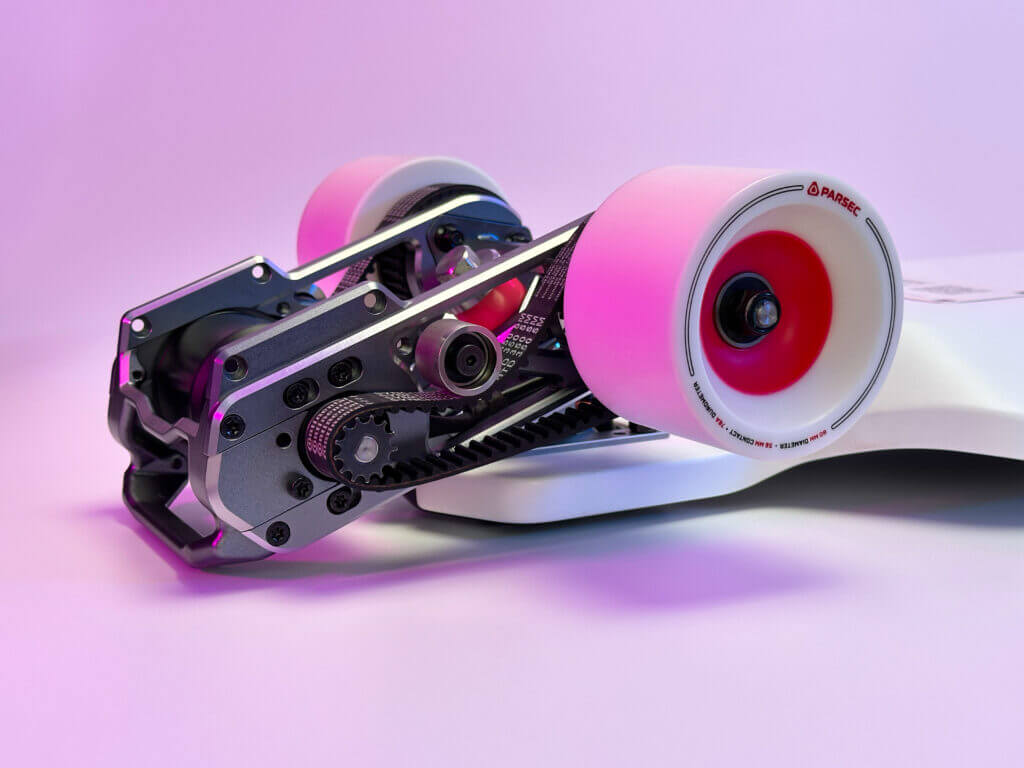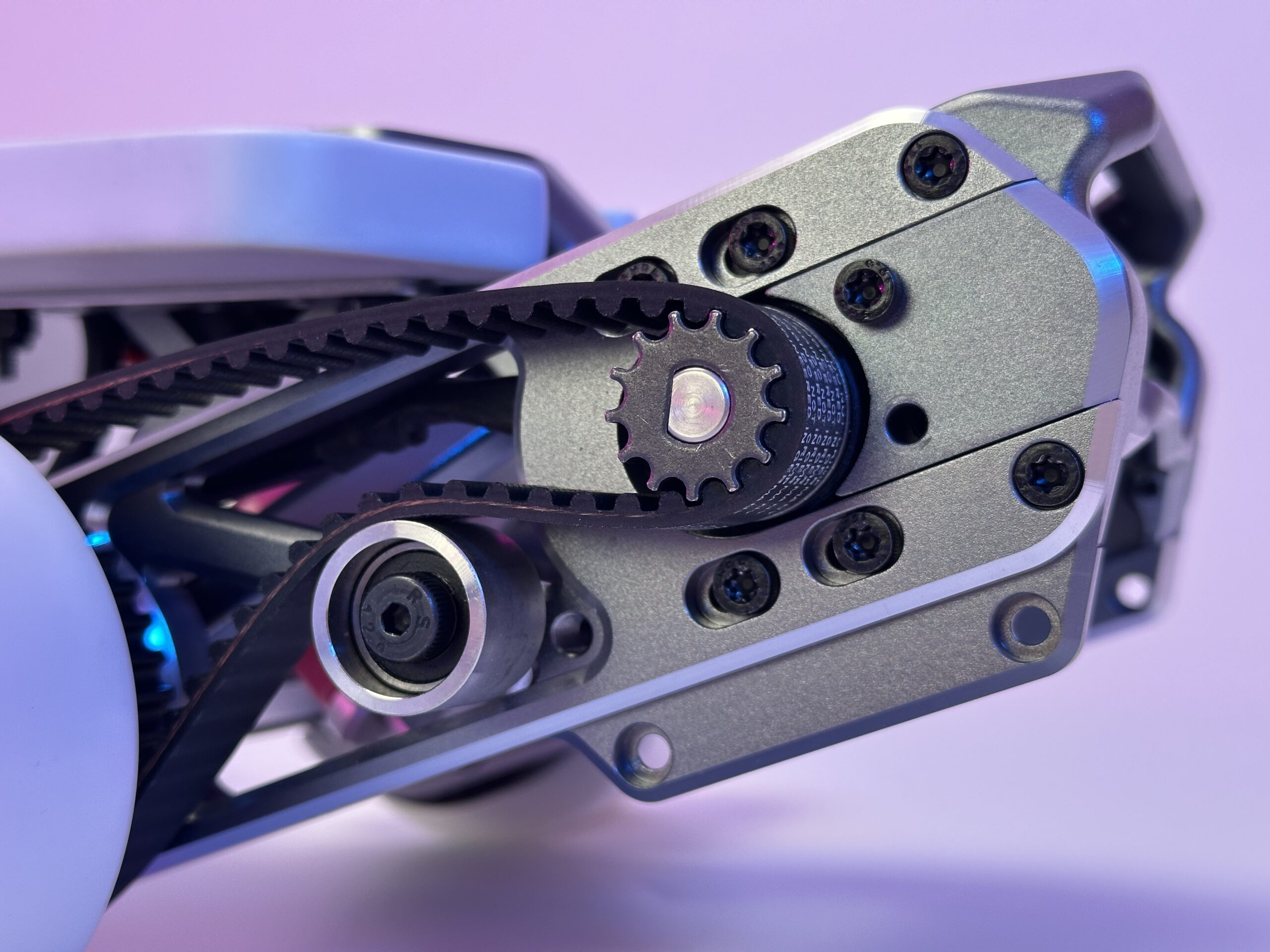Many electric skateboards claim to be as pushable as regular longboards, but the truth is that most of them will leave you exhausted very quickly if you actually try to push to get somewhere. That’s not the case with Aero Pro. I can push for miles on this board, easily.
That’s because of Aero Pro’s low deck, light wheels, and a drivetrain that doesn’t hold you back when you want to skate-skate. It’s designed for efficiency and precision, and uses an idler pulley with preset positions to control belt tension. It’s the Efficient Precision Idler-Controlled Drivetrain.
The E.P.I.C. Drivetrain (aka EPIC-D).

While the extremely low belt tension already makes pushing doable over long distances, you can disengage the belt drive entirely by taking off the belt and have the same level of free-roll as a regular longboard. This takes only seconds. And re-installing takes a few more seconds, all without tools.
Even if you don’t care for pushing, the EPIC-D removes all the annoyances of belt drive while expanding the versatility.
Besides allowing the Aero Pro to be pushed like a longboard, the EPIC-D solves a number of common frustrations that riders have with belt drive:
Belts breaking when too tight. EPIC-D is designed to keep the belt tension much looser than conventional e-board belt drives, making belt tears far less likely.
Belts skipping when too loose. With the introduction of the idler changing the path of the belt to engage better with the motor gear, EPIC-D makes what is typically viewed as loose feel tight.
Frustrating manual tensioning. The EPIC-D makes tensioning way easier through its wide range of accepted tension levels, and preset positions for the motors that finally allow for symmetry with no effort.
Time-consuming belt replacement. If you ever need to replace a belt, Aero Pro’s stock configuration lets you swap belts in as little as 10 seconds and without tools.
Drag. The EPIC-D produces so little drag that you don’t feel that drastic resistance when releasing the throttle while cruising. The board just coasts and requires less pushing or throttle for the same distance traveled.

